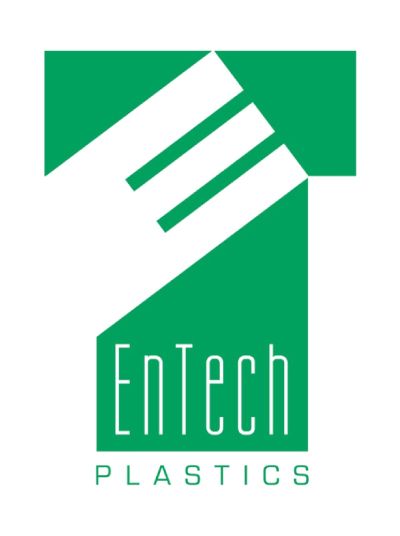Injection Molding vs. Compression Molding: A Comprehensive Comparison
When it comes to manufacturing plastic parts, two of the most widely used processes are injection molding and compression molding. While both techniques shape materials using heat and pressure, they differ significantly in their approach, capabilities, and ideal applications. Understanding these differences is crucial for manufacturers, designers, and engineers when selecting the optimal process for their specific needs.
What is Injection Molding?
Injection molding is a manufacturing process where heated, molten material (typically thermoplastic) is injected under high pressure into a closed mold cavity. The process begins with plastic pellets or granules being fed into a heated barrel where they're melted and mixed by a rotating screw. Once the material reaches the proper temperature and consistency, it's injected at high pressure through a nozzle into the mold cavity. The mold is then cooled, allowing the material within to solidify, taking the shape of the mold before being ejected as a finished part.
What is Compression Molding?
Compression molding is a forming process where a pre-measured amount of material (often thermosetting plastics, composites, or rubber) is placed directly into an open, heated mold cavity. The mold is then closed under pressure, causing the material to conform to the mold shape while curing or vulcanizing.
The process starts with a "charge" of material—typically in powder, pellet, or preform shape—being placed in the lower half of a heated mold. The upper half of the mold is then pressed down with significant force, distributing the material throughout the cavity. The combination of heat and pressure causes chemical cross-linking in thermosetting materials, creating the final cured part.
Key Differences: Injection Molding vs Compression Molding
Speed and Cycle Time
Injection Molding typically offers faster cycle times, especially for smaller parts. Once the mold is filled, cooling happens relatively quickly, and parts can be ejected in seconds to minutes.
Compression Molding generally requires longer cycle times due to the curing process needed for thermosetting materials. Parts may need to remain in the mold for several minutes to ensure complete curing.
Material Compatibility
Injection Molding works best with thermoplastics that can be melted and re-solidified multiple times. Common materials include polyethylene, polypropylene, ABS, nylon, and polycarbonate.
Compression Molding is ideal for thermosetting materials that undergo irreversible chemical changes when heated. This includes materials like phenolic resins, epoxies, silicones, and rubber compounds. It's also excellent for fiber-reinforced composites.
Part Complexity and Precision
Injection Molding excels at producing complex geometries with tight tolerances, intricate details, and thin walls. The high-pressure injection allows material to flow into fine features and sharp corners.
Compression Molding is better suited for simpler shapes and is particularly effective for large, thick-walled parts. While precision is good, it may not match the tight tolerances achievable with injection molding.
Tooling and Setup Costs
Injection Molding typically requires higher initial tooling costs due to the complexity of the molds, which must withstand high pressures and include sophisticated cooling and ejection systems.
Compression Molding generally involves lower tooling costs since the molds are simpler in design and don't require the same level of precision machining or cooling systems.
Typical Applications
Injection Molding Applications
Industrial Devices: Leveraging benefits such as durability, cost-effectiveness, design flexibility, and lightweight, injection molded plastics find extensive functional applications in various industrial sectors.
Medical Devices: Diagnostic equipment housings, Medical equipment components, Syringes, IV components, and surgical instruments demand the cleanliness and precision of injection molding.
Consumer Electronics: Phone cases, computer housings, connectors, and small electronic components require the tight tolerances and smooth finishes that injection molding provides.
Automotive Industry: Dashboard components, interior trim, bumpers, light housings, and under-hood components benefit from injection molding's precision and efficiency.
Packaging: Bottle caps, containers, lids, and disposable items are mass-produced efficiently using injection molding.
Toys and Recreation: Action figures, building blocks, sporting goods, and recreational equipment benefit from injection molding's ability to create detailed, colorful parts.
Compression Molding Applications
Aerospace and Defense: Composite panels, radomes, structural components, and heat shields utilize compression molding's ability to process advanced composite materials.
Automotive Industry: Heavy-duty components like brake pads, gaskets, electrical insulators, and composite body panels are well-suited to compression molding.
Electrical and Electronics: High-voltage insulators, electrical switchgear housings, and components requiring excellent electrical properties are often compression molded.
Industrial Equipment: Valve seats, pump components, industrial gaskets, and chemical-resistant parts benefit from compression molding's material versatility.
Kitchen and Appliance: Heat-resistant handles, cookware components, and appliance parts that require durability and heat resistance are ideal for compression molding.
Ready to Bring Your Project to Life?
Both injection molding and compression molding serve crucial roles in modern manufacturing. Injection molding excels in production of complex thermoplastic parts with excellent precision, while compression molding is the preferred choice for thermosetting materials, composites, and applications requiring specific material properties.
Understanding the strengths and limitations of each process enables manufacturers to make informed decisions that optimize cost, quality, and performance for their specific applications. As both technologies continue to advance, they will remain essential tools in the manufacturing toolkit, each serving distinct market needs and applications.
Looking for a precision-driven partner for your next plastic manufacturing project?
At EnTech Plastics, we specialize in custom injection molding—delivering high-quality, cost-effective solutions for even the most complex part designs. Whether you're developing components for industrial goods or the medical, automotive, or consumer goods industries, our expert team is ready to help turn your concept into reality.
Contact us today to discuss your project requirements.
Be The First to Know!
Enjoying this article? Stay up to date and sign up now to get notified of new news and insights from EnTech Plastics.
